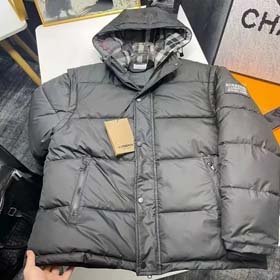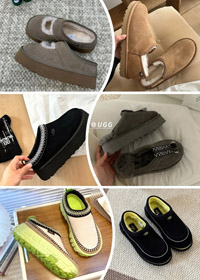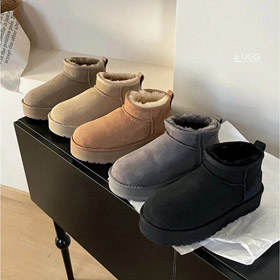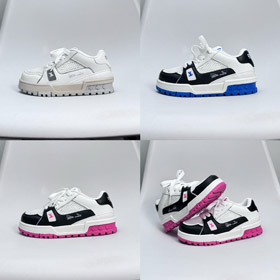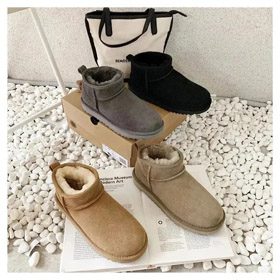Home >
Balenciaga's Audience Target and Market Positioning: A Fusion of Avant-Garde and Luxury
Balenciaga's Audience Target and Market Positioning: A Fusion of Avant-Garde and Luxury
2025-04-23
Balenciaga, a storied name in the world of high fashion, has long been synonymous with innovation, architectural silhouettes, and a bold reimagining of traditional couture. Since its inception, the brand has carved a distinct niche in the luxury market, appealing to a discerning audience that values artistic expression, technological innovation, and a rebellious spirit. This article explores Balenciaga’s target audience and market positioning, drawing insights from industry trends and referencing product insights from ACbuy Spreadsheet, a platform that showcases a curated selection of fashion items, including Balenciaga’s iconic designs.
Target Audience: The Discerning Innovators and Cultural Influencers
Balenciaga’s primary audience consists of fashion-forward individuals who view clothing not merely as apparel but as a form of self-expression. This demographic spans diverse age groups, from Gen Z trendsetters to millennial professionals and affluent Gen Xers, united by their passion for boundary-pushing style. Key segments include:
1. Youthful Trendsetters and Digital Natives
Gen Z and younger millennials form a significant portion of Balenciaga’s consumer base. These digital natives are drawn to the brand’s avant-garde aesthetic, which often merges streetwear with high fashion—think oversized silhouettes, deconstructed designs, and bold branding. For instance, products like the Balenciaga Triples (7 styles) -0515 listed on ACbuy Spreadsheet exemplify this fusion, with chunky sneakers that became viral sensations on social media platforms like Instagram and TikTok. This group values authenticity and exclusivity, seeking pieces that make a statement in their online and offline lives. They are also influenced by celebrities and influencers, such as rappers and models, who frequently sport Balenciaga, reinforcing its status as a “cool” brand.
2. Luxury Connoisseurs and Collectors
Older demographics, including affluent professionals and fashion collectors, appreciate Balenciaga’s heritage of craftsmanship and artistic vision. These consumers invest in timeless pieces that blend the brand’s historical legacy with modern updates. For example, the OG Balenciaga speed-1047 on ACbuy Spreadsheet, a sleek sock-like boot, reflects the brand’s signature minimalist yet striking design, appealing to those who seek understated luxury with a contemporary edge. This group prioritizes quality, exclusivity, and the brand’s ability to transcend seasonal trends, often viewing Balenciaga items as long-term additions to their wardrobes.
3. Cultural Influencers and Artists
Balenciaga has always attracted creatives, including musicians, artists, and filmmakers, who resonate with its rebellious ethos. The brand’s collaborations with artists and designers, as well as its provocative advertising campaigns, appeal to those who see fashion as a form of cultural commentary. For instance, the brand’s recent forays into virtual fashion and video game collaborations (e.g., Fortnite skins) cater to digital creators and gamers, expanding its reach into new cultural spheres.
Market Positioning: Redefining Luxury Through Innovation
Balenciaga’s market positioning is rooted in its ability to balance heritage with cutting-edge innovation, positioning itself as a disruptor in the luxury fashion landscape. Here’s how it distinguishes itself:
1. Avant-Garde Design as a Core Identity
Balenciaga has built its reputation on revolutionary designs that challenge conventional notions of beauty and form. From Cristóbal Balenciaga’s original “balloon skirts” in the 1950s to Demna Gvasalia’s modern reinterpretations of dad sneakers and oversized outerwear, the brand thrives on subverting expectations. Products like the Balenciaga Triples sneakers, with their exaggerated soles and industrial aesthetic, exemplify this approach, creating “ugly chic” trends that dominate street style. By embracing unconventional silhouettes and materials, Balenciaga appeals to consumers seeking unique, conversation-starting pieces that stand out from traditional luxury brands.
2. Luxury Streetwear Pioneer
The brand played a pivotal role in popularizing the luxury streetwear trend, merging high-fashion craftsmanship with casual, urban influences. This strategy has allowed Balenciaga to tap into the booming streetwear market while maintaining its premium status. Items like the OG Balenciaga speed boots, which blend athletic sock designs with luxurious leather, embody this hybrid approach. By collaborating with streetwear labels and embracing athleisure, Balenciaga attracts both sneakerheads and high-fashion enthusiasts, creating a bridge between subcultures.
3. Digital Innovation and Social Currency
Balenciaga has leveraged digital platforms to amplify its reach and engage with younger audiences. The brand’s use of virtual fashion shows, AI-generated campaigns, and social media challenges (e.g., the “#BalenciagaChallenge”) positions it as a leader in digital-first luxury. For example, its partnership with Fortnite allowed players to wear virtual Balenciaga outfits, translating real-world luxury into the metaverse. This focus on digital innovation not only drives engagement but also reinforces the brand’s image as forward-thinking and in tune with modern consumer behaviors.
4. Premium Pricing and Exclusivity
Despite its streetwear influences, Balenciaga maintains a high-end price point, ensuring exclusivity and reinforcing its luxury status. Products like the Balenciaga Triples sneakers, priced at a premium on ACbuy Spreadsheet, are positioned as investment pieces rather than mass-market items. This pricing strategy appeals to consumers who associate high costs with quality and rarity, while limited-edition releases and seasonal drops create a sense of urgency and desirability.
Challenges and Opportunities in Market Positioning
While Balenciaga’s avant-garde approach has solidified its status as a luxury innovator, it also presents challenges. The brand must navigate the fine line between edgy experimentation and commercial viability, ensuring that bold designs resonate with both niche and mainstream audiences. Additionally, maintaining ethical and sustainable practices has become increasingly important for modern consumers, and Balenciaga has faced scrutiny over its supply chain in the past. Embracing transparency and eco-friendly initiatives could strengthen its appeal to socially conscious luxury buyers.
Looking ahead, Balenciaga’s ability to continue blending heritage, innovation, and cultural relevance will be key to sustaining its market position. By staying attuned to evolving consumer preferences—whether through new digital experiences, sustainable collections, or boundary-pushing collaborations—the brand can further solidify its role as a trailblazer in the luxury fashion industry.
Conclusion
Balenciaga’s target audience is a diverse group of innovators, collectors, and cultural influencers united by their desire for fashion that challenges norms and sparks conversation. Its market positioning as a luxury disruptor, anchored in avant-garde design, digital innovation, and premium exclusivity, sets it apart from traditional luxury houses. By continuously reimagining what luxury means in the 21st century, Balenciaga remains a brand that not only follows trends but defines them, appealing to those who seek not just clothing, but a statement of individuality and rebellion. As showcased in ACbuy Spreadsheet, its iconic pieces continue to embody this ethos, making them sought-after items for fashion enthusiasts worldwide.













